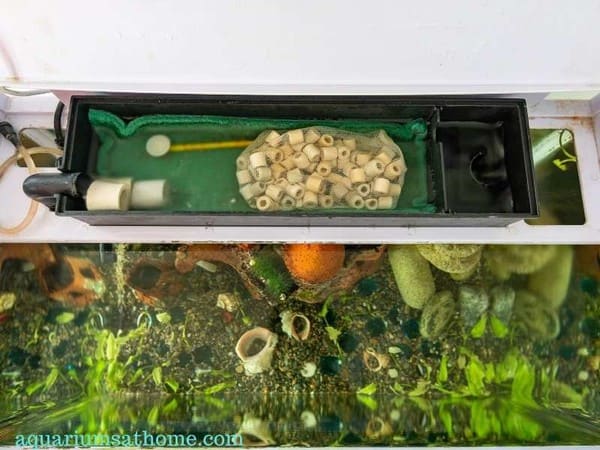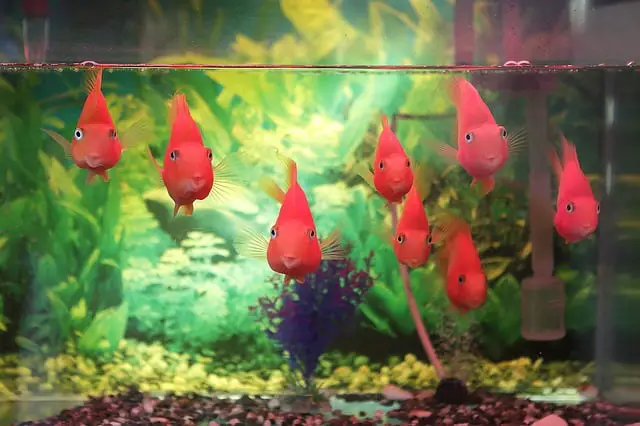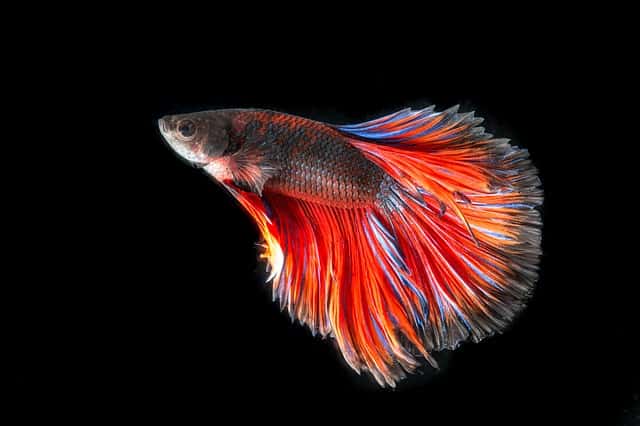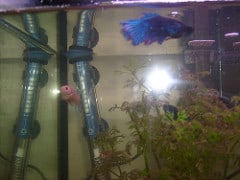Apart from food and daily maintenance products, the biggest expense when it comes to running an aquarium is the electricity bill. Energy is required to run all the necessary equipment such as filters, heaters, lights, protein skimmers, and air pumps. But how much energy does an aquarium use and what is the cost?
The cost of electricity for a fish tank varies and depends on the size and set-up of the aquarium and the fee for energy where you live. The bigger the tank, the higher the price. On average, a small 10-gallon freshwater tank heated to about 72-degrees Fahrenheit uses 150 kWh per year whereas a medium 30-gallon tank uses 150 to 200 kWh and a large 55-gallon tank uses 200 to 400 kWh.
Now that you know the energy needed to run an aquarium is dependent upon the size of your tank and how much electricity costs in your region, let’s explore this topic further and in more detail. I’ll explain how much energy the lights, heater, and filter consume as well as how much a tank will increase your overall electric bill.
So, if you’re ready to learn more about fish tanks and the expenses they incur, then let’s begin!
How Much Electricity Does an Aquarium Light Require?
Of all the equipment needed to run an aquarium, the lights consume the most energy. Regarding the electricity bill, the lighting portion will account for at least half of the total price. To lower the cost, you need to reduce the number of hours you leave the lights on in your tank.
LED lights use less energy than fluorescent lights. If you have an old aquarium light that uses fluorescent bulbs, why not upgrade to a new LED model? Not only do LED lights use 80% less electricity, they also only won’t ‘overheat’ your aquarium!
Another way to save energy on lighting is to place your tank near a window or under a lamp. To mimic the natural day-night cycle that most aquarium fish are used you, the sunlight from a window or the ambient light from a lamp for 6 to 8 hours per day is often enough.
Not having live plants in your fish tank will also help reduce electricity fees. Live plants require at least 12 hours of light per day, depending on the type of plant and how you set-up your aquarium. By not having plants, you reduce your tank’s energy costs significantly.
How Much Electricity Does an Aquarium Heater Require?
An aquarium heater comes in second regarding total electricity costs and will account for about ¼ of the bill. Filters run continuously and are a vital component of any fish tank. Luckily, as far as overall energy fees are concerned, they’re not very significant.
How Much Electricity Does an Aquarium Filter Require?
Filters don’t use very much energy at all when it comes to running fish tanks – only about 10% of the total cost. Filters are necessary in most aquariums, especially the larger ones with many inhabitants. They keep the water clean and clear while removing toxic ammonia. They also help aerate the tank.

What Other Equipment in a Fish Tank Uses Electricity?
Other equipment that uses electricity in a fish tank includes the air pump. This device costs very little to run – only about 10% of the total electrical cost. If you have a saltwater tank and need to hook-up a protein skimmer, it’ll cost you an additional 10% of the total as well.
How Much Will a Fish Tank Raise My Electric Bill?
The increase in your electric bill for operating an aquarium depends on the set-up of the tank, the type of equipment you have, and the cost for power in your region. It’s difficult to pinpoint an exact amount but on average, per year, you can expect to pay anywhere around $25 for a small 10-gallon tank, $50 for a medium 30-gallon tank and $100 for a large 55-gallon tank.
Are Fish Tanks Expensive to Run?
As mentioned above, the total cost to run a 10-gallon freshwater aquarium is about $25 per year with no live plants. The bigger the tank and the more fish you have, the more expensive it’ll be to maintain as you’ll need additional equipment to keep the tank clean.
Are Saltwater Tanks More Expensive to Run than Freshwater Tanks?
Saltwater tanks are more expensive to run than freshwater tanks. The average set-up cost for a 30-gallon marine/reef tank ranges in price from $700 to $800 with an additional $500 to $600 in yearly maintenance fees! Freshwater tanks cost about half as much to purchase and maintain. Therefore, if you’re a beginner or on a budget, I recommend investing in a freshwater tank instead.
What are Ways to Save Electricity When Running My Fish Tank?
There are ways to cut your energy costs when it comes to running your fish tank. As light cost the most to operate, try moving your tank near a window or under a lamp. This way, you won’t need to keep your aquarium light on as long throughout the day.
Using an LED light instead of a fluorescent one will also help lower electrical costs. If you have a planted tank, you can likely get away with using a 100-watt bulb instead of a 150-watt bulb. This alone will cut your lighting costs by at least a 1/3.
Turning down your heater a degree or two will also help save money on electricity. This simple change won’t harm your fish in any way but will help cuts energy costs in the long run. If you happen to have your aquarium near a window, the sunlight will also help heat the water during the day.
You can also lower the GPH ratings on your water pump and filter. This will save you money on electricity without altering the overall effectiveness of the devices. Look for energy-efficient options the next time you upgrade your aquarium equipment.
How to Calculate Your Fish Tank’s Energy Consumption?
To determine how much energy your fish tank consumes, you need to know how many watts each piece of equipment generates and for how long each is running per day – watts multiplied by hours will give you the daily usage amounts.
A thousand watts equals 1 kWh. To find out the cost of 1 kWh, check your electrical bill. The price can be calculated by adding up all the rates that end with per kWh or by using the following formula: Watts X hours: 1000 X kWh fee X 30 = total monthly electrical cost
Conclusion
To conclude, the energy costs to run a fish tank varies, depending on the size and type of aquarium and the price of electricity where you live. Bigger tanks use more energy and cost more. For example, a small 10-gallon freshwater tank heated to 72-degrees Fahrenheit uses about 150 kWh per year whereas a medium 30-gallon tank uses between 150 and 200 kWh and a large 55-gallon tank uses 200 to 400 kWh.
I hope this article has been of help to you. Thanks for reading and good luck with your aquarium hobby.
Related Posts
How High Should the Water Level be in a Fish Tank?






